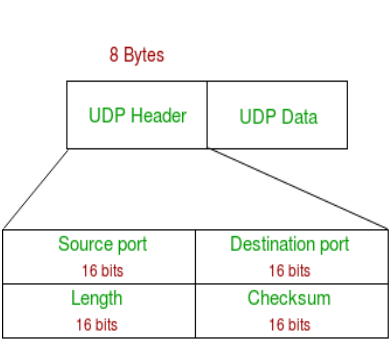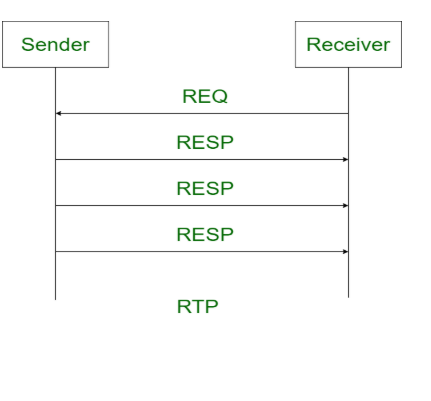Difference between UDP and RTP
Last Updated :
23 Oct, 2020
1. User Datagram Protocol (UDP) :
UDP is a Transport Layer protocol. It is a part of Internet Protocol suite, referred as UDP/IP suite. It is unreliable and connection-less protocol. Hence, there is no need to establish connection prior to data transfer. UDP sockets are an example of datagram sockets. It is more efficient in multicasting and broadcasting.

2. Real Time Transport Protocol (RTP) :
Real-Time Transport Protocol (RTP) is a internet protocol which is used for delivering audio and video over networks. It is basically used in communication and entertainment systems that involve streaming media.

Difference between UDP and RTP :
| S.No. |
UDP |
RTP |
| 1. |
UDP stands for User Datagram Protocol. |
RTP stands for Real-time Transport Protocol. |
| 2. |
UDP is the Datagram oriented protocol. It is because there is no overhead for opening a connection, maintaining a connection, and terminating a connection. |
RTP is a internet protocol which is used for delivering audio and video over networks. |
| 3. |
It is a connection-less protocol. |
It is a stateless protocol. |
| 4. |
UDP is slower, simpler and less efficient as compared. |
RTP is faster, simpler and more efficient than UDP. |
| 5. |
UDP is used for real-time streaming. |
RTP is used for real-time streaming. |
| 6. |
It has no retransmission of lost packets. |
It can tolerate packet loss. |
| 7. |
It supports broadcasting and multicasting. |
It also supports broadcasting and multicasting. |
| 8. |
UDP is unreliable. |
RTP is less reliable. |
Like Article
Suggest improvement
Share your thoughts in the comments
Please Login to comment...